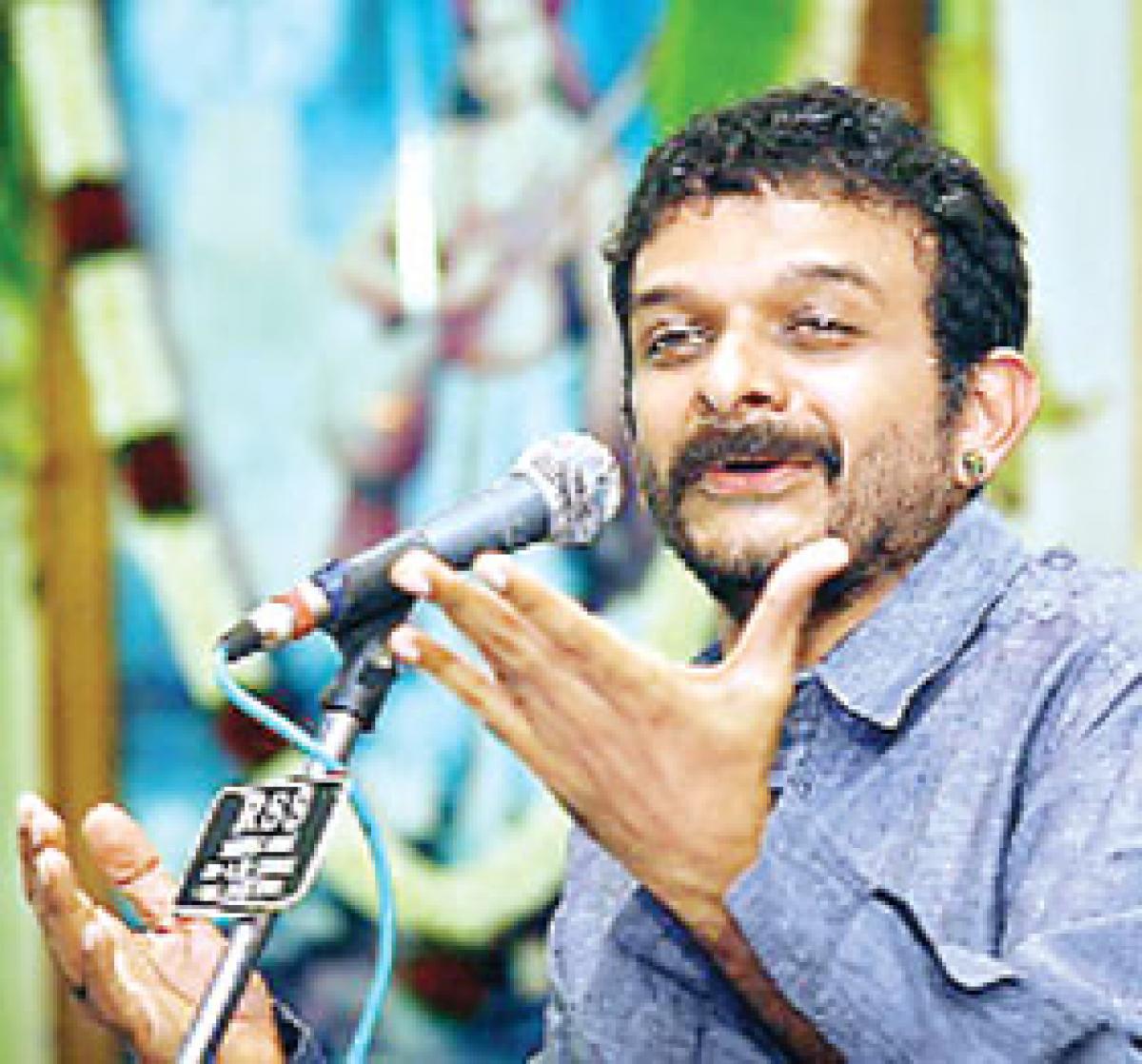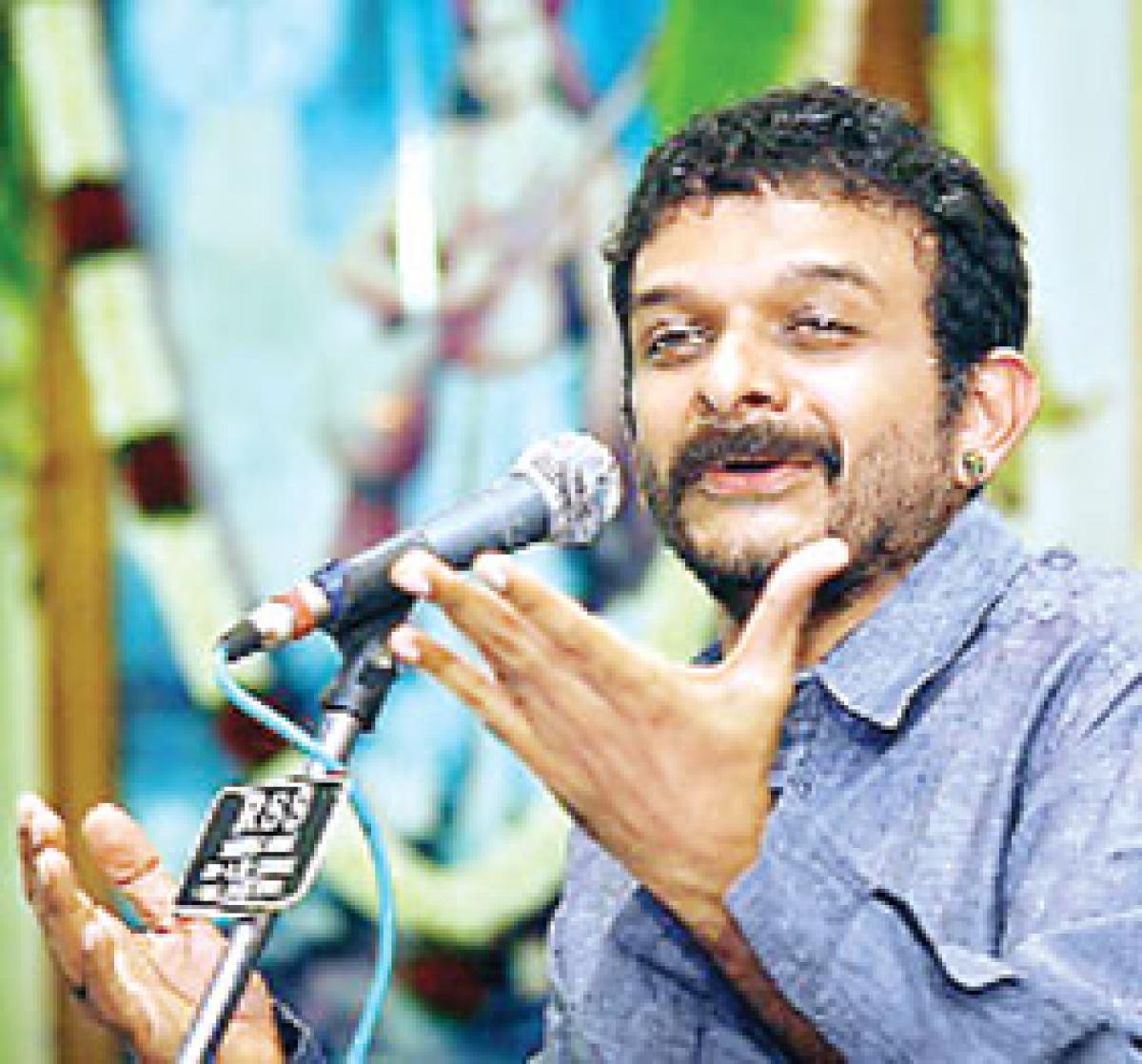Live
- Chandrababu Vows Strict Measures for Women's Safety and Drug Control
- Deputy CM Bhatti Vikramarka Highlights Congress Government's Achievements
- PCC Expansive Meeting Held at Gandhi Bhavan in Hyderabad
- Formula 1: I didn't really want to come back after Brazilian GP, admits Hamilton
- IND vs AUS BGT 2024-25: Pat Cummins says the pressure of playing at home is there but team well prepared to beat India and win Border-Gavaskar Trophy
- Yastika Bhatia ruled out of remainder of WBBL 10 due to wrist fracture
- Telangana Assembly Sessions to be Held in the Second Week of December
- Must watch, says CM Yogi after seeing ‘The Sabarmati Report’; makes it tax-free in UP
- Worsening air pollution in Mongolian capital sparks public alarm
- Over 9 in 10 Indian leaders anticipate an increase in cybersecurity budgets next year
Just In

That’s TM Krishna for you…a person, who cannot be ignored…cannot be explained, certainly not explained away…a musical phenomenon…” is how Gopalkrishna Gandhi attempted at describing this Carnatic musician from Chennai,
 My Guru Seetarama Sarma is from the dance world, so I had sung for many dance performances when I was young. But soon the hierarchy came and I looked upon at dance as a lower art form.
My Guru Seetarama Sarma is from the dance world, so I had sung for many dance performances when I was young. But soon the hierarchy came and I looked upon at dance as a lower art form.
In due course, I began experiencing life, and art itself, in a different way that enabled me to work with dance
That’s TM Krishna for you…a person, who cannot be ignored…cannot be explained, certainly not explained away…a musical phenomenon…” is how Gopalkrishna Gandhi attempted at describing this Carnatic musician from Chennai,
who has belled many a cat in the south-Indian spectrum of art. But, as he speaks on Culture, Society and State, his chosen topic during Manthan Samvaad 2015, in Hyderabad, one would wonder just why anybody would want to explain him away, much less ignore him.
Addressing the thought processes prevalent in the times that mediate and dictate the path that art takes in those times, Krishna raised pertinent questions that both artists and rasikas ponder over alike.
Is the artist, the ethical artist to be specific to his careful choice of vocabulary, answerable to the society? Must the law of the land allow for absolute artistic freedom?
And thus progressed the samvaad, between TM Krishna and the audience, between TM Krishna the artist and TM Krishna the thinker, between the inner and outer voices of those few,
for whom some pennies may have dropped owing to this talk – a talk which in itself was filled to the brim with irreverence bordering on the delightful.
The delight only multiplied many times over for this author who was suddenly presented with the opportunity to interview this enigmatic man. Very little wonder then, that it went like this:
On the relationship between sahityam and sangeetam…
Sahityam and sangeetam cannot be separated, especially in art music where musical pronunciation takes precedence over linguistic pronunciation. I call it syllabo-melodic identity.
The compositions have been created by geniuses who employed language and meaning as tools of art. But they also went beyond their own constructs.
So if we get stuck with artha bhava, we are limiting ourselves musically, aesthetically, religiously, politically, socially.
On his experience of working with dance….
My Guru Seetarama Sarma is from the dance world, so I had sung for many dance performances when I was young. But soon the hierarchy came and I looked upon at dance as a lower art form.
In due course, I began experiencing life, and art itself, in a different way which enabled me to work with dance. The compositions by themselves were familiar, but engaging with dance, my idea of abstraction,
especially linguistic abstraction, changed. Music and dance transcend linguistic abstraction in very different ways. I must reinterpret the music in such a way that the music can actually be parallel to the dance.
Being part of dance changed many things for me as a musician. I had multiple answers coming to me at multiple times. It’s been a fascinating experience.
On the idea of silence in sound….
In music, the idea is that the silence is in between two lines of music. This is said because of reception. But, I feel, we need to go deeper than this.
To me what is more important is the silence when the music is being played. Silence is more of a mental state, when the reception is complete. We could call it stillness.
So, could the music be in a fashion that would allow the musician, who is also as much a receiver as the rasika, that the music itself would be received completely.
Something about the way the music itself is produced, internalized and sung, that there is no agitation in the music. The pace of the music does not matter.
To me silence in music is the state which the music gives when the melody itself is being played, rather than when there is silence. This is experiential.
One could say it just happens, but I would not say there is no subconscious process involved at all. It comes from how you engage with the art.
The event may happen at some point, but will not unless and otherwise the engagement with the process until that point is complete by itself.
I am not bothered about the event, I must be vulnerable to my art form, be as flawed as I am, allow myself to go into it and live in it. That is when silence accompanies the melody.
To comprehend how sound and silence come together, and revel in the stillness that ensues, one only needs to experience the art that happens when TM Krishna is engaging with it; and let the sthiratva go deep down to the very core of one’s being.
By:Katyayani Thota

© 2024 Hyderabad Media House Limited/The Hans India. All rights reserved. Powered by hocalwire.com







